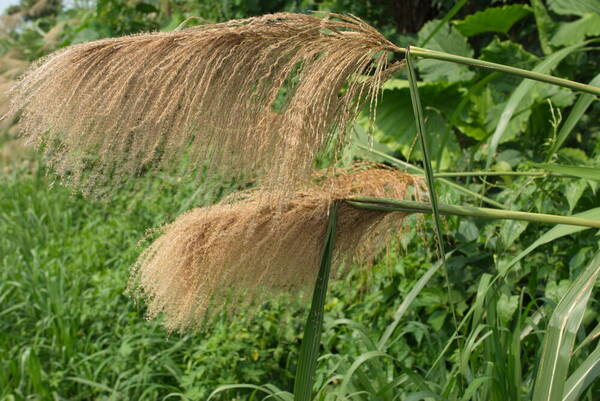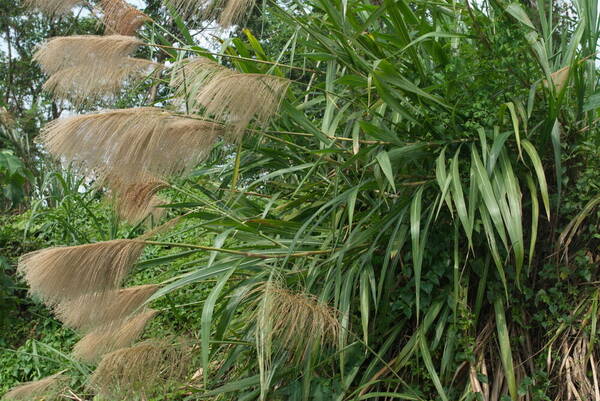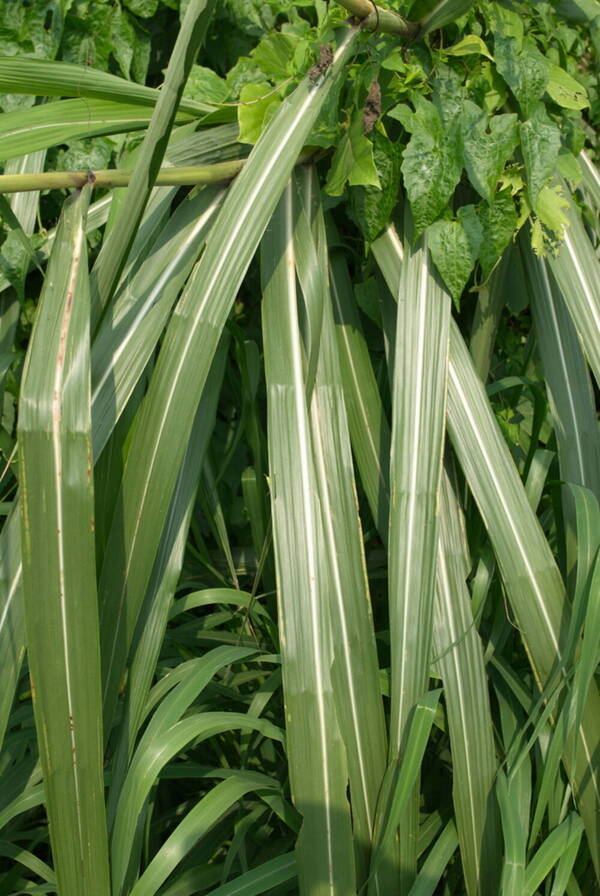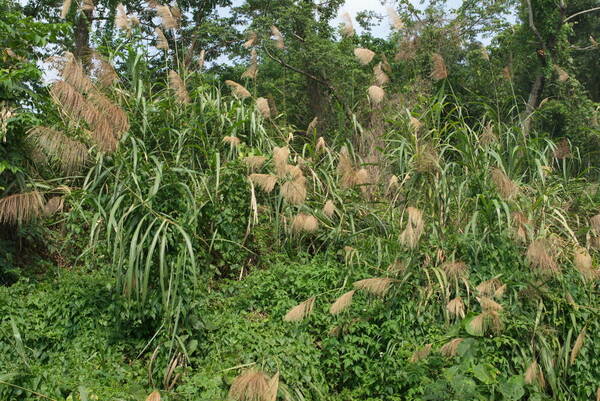Info
Subfamily: Panicoideae
Genus etymology: Miscanthus = "pediceled flowers" [Greek] refering to the florets
Species etymology: floridulus = "bloom becoming" [Latin] refering to its profuse flowering
Photosynthetic type: C4 (warm season)
Nativity: naturalized - intentional
First recorded in Hawaiʻi: 1995
Map

Inflorescence
 image credit: 潘立傑
image credit: 潘立傑Plant
 image credit: 潘立傑
image credit: 潘立傑 image credit: 潘立傑
image credit: 潘立傑Habit
 image credit: 潘立傑
image credit: 潘立傑Description
Plants cespitose, forming large clumps. Culms 1.5-4 m tall, 8-16 mm thick below. Leaves crowded at the base; sheaths glabrous or sparsely pubescent, margins glabrous or ciliate; ligules 1-3 mm; blades 30-80 cm long, 15-40 mm wide, adaxial surfaces pubescent near the bases, glabrous elsewhere, midveins whitish, conspicuous both ab- and adaxially. Panicles 30-50 cm long, 10-20 cm wide, exserted, dense, ovoid-ellipsoid, white, usually with more than 15 branches; rachises 25-40 cm, hispid-pubescent, 3/4 - 4/5 as long as the panicles; branches 10-25 cm long, 8-10 mm wide, often branched at the base; internodes 3-5 mm, glabrous. Shorter pedicels 1-1.5 mm; longer pedicels 2.5-3.5 mm, becoming somewhat recurved. Spikelets 3-3.5 mm, lanceolate to lance-ovate; callus hairs 4-6 mm, to twice as long as the spikelets, white. Lower glumes glabrous or puberulent distally; awns of upper lemmas 5-15 mm, weakly geniculate. 2n = 36, 38, 57.
(Description source: Barkworth, M.E., Capels, K.M., Long, S. & Piep, M.B. (eds.) 2003. Flora of North America, north of Mexico. Volume 25. Magnoliophyta: Commelinidae (in part): Poaceae, Part 2. Oxford University Press, New York. 783 pp http://floranorthamerica.org/Miscanthus_floridulus )